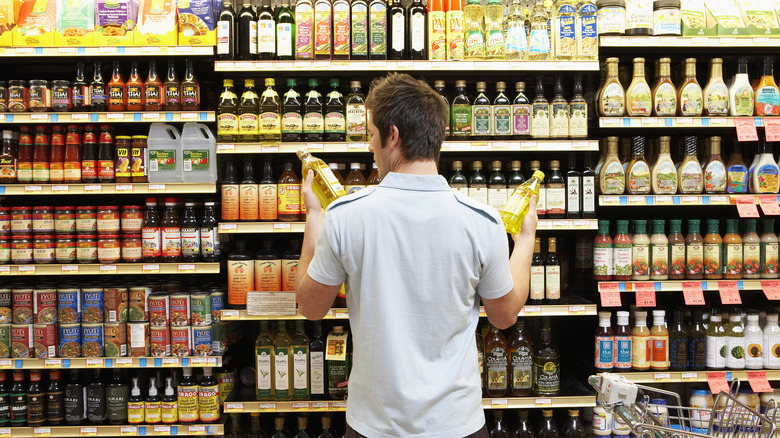The Strategic Reason Grocery Stores Change Their Layouts
Your local grocery store can often give you the comfortable feeling of a home away from home, which is why when the items you usually find in one aisle are suddenly stocked in another, it can certainly make you take notice. It's no coincidence when supermarkets switch up their layouts, and they often do it to create customer interest, which hopefully leads to impulse purchases. In short, you'll buy more if you see more!
While consistency is often something we look for in a grocery store, it's up to the store itself to not only keep customers but to keep products moving off shelves and into those customers' cupboards and refrigerators. Tactics like rearranging their layouts keep things fresh and reignite interest from shoppers who might be deep in habit when it comes to their weekly grocery run. Officially termed a "reset", taking the products off an entire shelf, or even aisle, and figuring out the best way to arrange them to move product through trial and error, is an essential part of everyday grocery retail. So, when it comes to even the aisles you've known to be tried-and-true all these years, it's important not to get too comfortable!
A new layout means more browsing
When, say, your preferred peanut butter brand isn't in its usual spot, very rarely do you think to yourself, "Oh, well, I guess no peanut butter for me this week..." Odds are, you're now simply on a mission to find it. Grocery stores are banking on customers encountering other items they might not have previously considered while searching for the items that are regularly on their shopping list. Your search will increase inspection of surrounding products, some of which you might just convince yourself you need, too, and by checkout time, you'll likely have an awful lot more than that peanut butter!
The Grocery Store Guy reports that during these resets, strategically placing more high-end, expensive items in places with common foot traffic is another way rearranging the store layout might payoff in their eventual profit report. By making an expensive item center stage, rather than fading into the background with other products like it, customers are far more likely to take a gamble on it and toss it in their cart. Not quite a trick, but also a bit more than a gentle suggestion, resetting the store is simply a necessary part of the grocery game.
Other ways supermarkets make you buy more
At the end of the day, like all retail establishments, it's necessary for grocery stores to primarily be concerned with moving product and making money. Mixing up their layouts every now and then is just one of the ways these places spark your need to buy more stuff. The Wall Street Journal reports that other ways supermarkets subtly suggest to consumers that they might want to purchase more than they need are making grocery carts larger so you feel the need to fill them, placing seasonal items right as you walk in, and shelving items geared toward children (for example, sugary breakfast cereals with cartoon mascots) right at their eye level. In doing this, supermarkets are banking on their customers (and their kids) to play it a little more fast and loose with what they end up taking to the checkout lane.
We want these markets to remain in business, so take any shrewd ploy you may notice on your next shopping trip with a grain of salt. Besides, more often than not, an impulse buy can put a smile on your face, and rarely makes too much of a dent in your bank account. It's much more worth it to buy that spur-of-the-moment bag of chips if it means keeping your local supermarket open!


